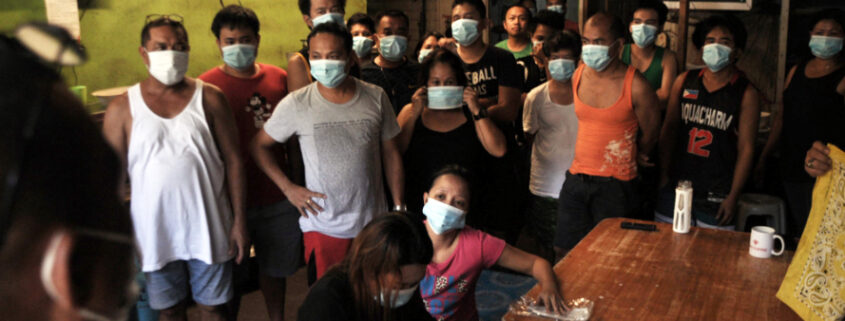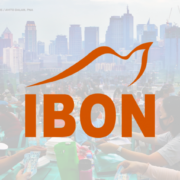Hatid Probinsya and Balik Probinsya, more harm than good?
The national government’s program of sending people back to their hometown recently came under fire for spreading COVID-19 in the provinces. For example, Tanauan town and Baybay City in Leyte each recorded their first respective confirmed COVID-19 cases last May 28. Both confirmed cases were among the first and so far only batch of beneficiaries of the Balik Probinsya, Bagong Pag-asa Program (BP2). Meanwhile, in the war-torn city of Marawi, nine confirmed cases are beneficiaries of the Hatid Probinsya program.
BP2 and Hatid Probinsya
BP2 is a pet project of President Duterte’s long-time trusted aide and now Senator Bong Go. Executive Order 114, which enabled the said program, came two days after the Senate adopted Go’s resolution urging the executive department to formulate and implement a Balik Probinsya program.
BP2 is a “long-term program of the government intended for Metro Manila residents who want to go home to their provinces for good”. It reportedly aims to decongest the National Capital Region (NCR) and is mostly targeted at people from urban poor areas. It is also packaged as “redistributing wealth” by bringing development to the countryside.
According to BP2’s website, the first batch was composed of 112 individuals from the province of Leyte. Leyte Governor Dominic Petilla said that most of them are workers who lost their jobs due to the Luzon-wide lockdown. BP2 has three phases of intervention, namely short-, medium-, and long-term.
The short-term intervention provides beneficiaries transport, cash assistance of Php15,000, and livelihood opportunities. All government programs, activities or projects with funding will be adapted for the program.
The medium-term intervention involves projects or programs for implementation after the lockdown and lifting of travel restrictions. This includes establishing new special economic zones in Visayas and Mindanao, among others. The long-term plan includes passing of laws deemed important for rural development.
The program’s goals look good on paper but its pretentious character is exposed by the absence of concrete plans for strengthening rural production. Beyond the program’s promises, what work will people going back to their hometowns really have?
Likely not much, because the program’s vision of developing the countryside is still under the framework of neoliberalism which continues to destroy the country’s agricultural sector. The special economic zones the program envisions to build will, if anything, just cater to the needs of foreign capital but with scant domestic linkages and contributions to national development.
The long-term plan includes the passage of the Duterte administration’s priority bills like the National Land Use Act and giving tax incentives to tourism industries – both have the potential to hasten land conversions. Even legislation supposedly giving incentives for agriculture is more inclined to push for more destructive corporate plantations. There is also the self-serving political logic and push for shifting to a federal system through Charter change.
On the other hand, Hatid Probinsya is intended to help individuals stranded in Metro Manila by quarantine travel restrictions go back to their home provinces. This includes overseas Filipino workers (OFWs). The program arose after reports of thousands of OFWs stranded for more than a month in quarantine facilities. BP2 trips have been temporarily suspended to prioritize the Hatid Probinsya program.
Infecting the provinces
In the absence of a mass testing program, BP2 and Hatid Probinsya are turning out to be additional sources of COVID-19 transmission in some provinces. It is a disaster slowly unfolding especially with the healthcare capacity in rural areas much lower than in NCR.
Mass testing means testing all suspected cases whether symptomatic or asymptomatic, testing all close contacts of positive cases, regular testing of all frontline healthcare workers, and testing for surveillance of high-risk communities or vulnerable populations. Testing is crucial to detect cases, isolate carriers, and trace contacts to contain the spread of the virus.
The Department of Health (DOH) claims that its expanded risk-based testing broadens the coverage of persons to be tested. However, according to the Department Memorandum No. 2020-0285, RT-PCR testing is still based on a prioritization scheme.
RT-PCR is the gold standard for COVID-19 testing. In the Hatid Probinsya program, locally stranded individuals (LSIs) are tested only using the rapid test method. Scientists and medical groups do not recommend relying solely on rapid tests to check if individuals are positive for COVID-19. Their results are not that reliable and hence of very limited use in infection control.
The country’s current healthcare capacity is also still not suited to respond to pandemics like COVID-19. It is very much privatized and uneven between regions; thus access is an issue.
As of June 27, the NCR recorded 17,450 total confirmed COVID-19 cases surpassing scientists’ projection of 16,500 cases by the end of June. As of June 26, the region has 2,487 isolation beds, 1,071 ward beds, 569 ICU beds and 879 ventilators dedicated to COVID-19. The 10 doctors per 10,000 population and 12 nurses per 10,000 population in the region generally meets World Health Organization standards (10:10,000 for doctors and nurses). However, there are much fewer physicians and nurses in regions outside Metro Manila.
According to DOH Region 8, there are 499 total confirmed cases of COVID-19 in Eastern Visayas, of which 68% or 341 cases are returning residents, as of June 27. Of these returning residents, 293 are LSIs, 45 are OFWs, and three are BP2 beneficiaries. Leyte, which accounts for 40% of the cases in Region 8, is the destination of most of the returning residents who tested positive with COVID-19.
Meanwhile, in the Bangsamoro Autonomous Region in Muslim Mindanao (BARMM), there are 58 confirmed cases, with the province of Lanao del Sur having the highest number of cases at 35. This includes the nine returning residents confirmed to be COVID-19 positive in Marawi City.
Eastern Visayas has only two COVID-19 testing centers, both are located in Tacloban City. Of the two, one is a private testing center and the other one, the Eastern Visayas Regional COVID-19 Testing Center, is a public facility. BARMM, on the other hand, has only one testing center, the Cotabato Regional and Medical Center, located in Cotabato City, Maguindanao.
The majority of licensed COVID-19 testing centers in the country are in the NCR, accounting for 29 of the 67 total centers. This could be a factor why Metro Manila is the top region with total number of cases—higher testing capacity results in more cases detected.
In terms of facilities, the province of Leyte only has nine ICU beds, 203 isolation beds, 50 ward beds, and 10 mechanical ventilators dedicated to COVID-19 cases, as of June 26. Data from the 2018 Field Health Service Information System (FHSIS) shows that there are only 57 medical doctors in Leyte, including 7 doctors in Ormoc City, 4 doctors in Tacloban City, and 117 public health nurses.
Quarantine facilities in Region 8 are currently running on full capacity prompting the Regional Task Force 8 and local government units to request for a 14-day moratorium on the national government’s Hatid Probinsya program.
Lanao del Sur meanwhile reported 3 ICU beds, 30 isolation beds, one ward bed, and four mechanical ventilators exclusive for COVID-19 cases. There are only 31 medical doctors and 16 public health nurses. In the city of Marawi there are only 2 doctors and 2 nurses.
In the whole region of BARMM, the doctor and nurse ratio per 10,000 population are 0.8 and 3.8 respectively. For Region 8 the ratios are 2.5 doctors per 10,000 population and 6.6 nurses per 10,000 population.
The increase of confirmed cases in Leyte is disproportionately affecting healthcare workers. On June 16, of the 59 new cases reported in Region 8, 22 are hospital workers. Of the 59 new cases, 52 are from Leyte. As of June 27, there are already 94 healthcare workers infected with COVID-19 in the region.
Ill-conceived plan and self-serving agenda
The Hatid Probinsya and Balik Probinsya programs are proof of government’s ill-conceived COVID-19 response. The less able rural areas are now bearing the brunt of the lack of a cohesive response plan that addresses the gross socioeconomic and healthcare incapacity of the country.
The government failed to maximize the three months of lockdown to start the mass testing, tracing of all contacts of positive cases, and isolation and quarantine needed to contain the spread of the virus. It also did not increase the health system’s capacity to treat all COVID-19 cases.
Instead of focusing on boosting the country’s healthcare capacity, the government apparently even used the pandemic to boost the political career of Palace favorites and to push for more neoliberal and authoritarian policies. Injecting a self-serving political agenda undermines the competent health response so needed by the people.
The administration’s prescriptions and practice to deal with the health crisis are not working. This only makes the call for an alternative approach that contains the virus and cures patients, instead of compromising them, even more urgent. #







